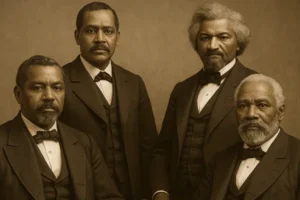The Secret to a Thriving Organizational Culture
Organizational culture is always under construction – or destruction. It is not a fixed monument etched in vision statements or value posters. Instead, it is a living behavioral ecosystem. This is to say that it changes, often subtly and rapidly, with every decision, every action, and every tolerated deviation. Leaders who fail to recognize this reality often mistake culture as a branding initiative, when in fact it is a behavioral outcome. And as Reasoned Leadership affirms, such outcomes cannot be fabricated; they must be earned through structure, clarity, and modeled example.
A foundational principle of Reasoned Leadership is that culture is not a passive element of leadership but a reflection of its legitimacy. In this sense, culture is the visible trail left behind by sustained behavioral modeling. If anything, it reveals what leadership truly values, and this is true whether that be excellence or apathy, integrity or image management. As such, organizational culture is neither spoken into existence nor managed into place. Instead, it is lived into place through disciplined behavior, emotionally aligned beliefs, and intentional strategic action.
The Psychology of Modeled Behavior
In many ways, we have to think of organizational culture as something that either is or is not. Solid cultures are formed through deliberate behavioral mirroring. It emerges as individuals observe, assess, and replicate what is modeled and rewarded. “Do as I say, not as I do” doesn’t cut it. And yes, the implications are profound and well-documented in social science. For example:
- The Elevator Experiment shows that individuals unconsciously conform to social norms, even when those norms are irrational. When planted actors faced the back of an elevator, real participants almost invariably followed, despite the obvious deviation from functional behavior. This phenomenon isn’t about logic; it’s about behavioral assimilation. The same occurs in organizations. Employees will turn, adjust, and align not because of values on a website, but because of visible cues from authority and peers. (See example)
- Milgram’s Obedience Studies demonstrate the extraordinary power of authoritative modeling. Participants, under the instruction of an authority figure, delivered what they believed were harmful electric shocks to others. They continued despite visible distress, simply because the behavior was legitimized by someone in power. This experiment dismantles the illusion that people naturally resist harmful actions. In reality, absent internalized ethics and a culture that demands integrity, people often follow harmful behavior if it appears endorsed by leadership.
- The Asch Conformity Experiments reinforce that individuals are willing to override their own judgment to avoid standing out. In group settings, participants gave clearly incorrect answers just to match the majority. Organizational culture follows this pattern: when a dominant behavioral current forms, others follow, not necessarily because they agree, but because standing against the current carries social cost.
- Bandura’s Bobo Doll Experiments further clarify that individuals, particularly children (but by extension, anyone under a power differential), replicate not only what they are taught but what they observe. Aggressive modeling leads to aggressive behavior. In organizational settings, this reinforces the necessity of aligned leadership modeling, especially when stakes are high and tensions rise.
- The Stanford Prison Experiment, while ethically controversial, showed how quickly individuals conform to the roles they are given and the behaviors they observe as appropriate within that context. The simulated prison culture degenerated rapidly into abuse, not due to explicit instruction, but due to modeled behavior and unchallenged norms. This same degradation can occur in organizations that fail to enforce behavioral boundaries and instead allow roles, hierarchies, or unchecked authority to define acceptable conduct.
The list goes on, but these experiments, when taken collectively, point to a singular, non-negotiable truth: people follow what they see. And in leadership, what is seen becomes what is believed to be permitted or expected. In other words, in your organization, you get exactly what you model. If you don’t like what you see, perhaps it’s less about your people and more about you.
Reasoned Leadership and the Cultural Imperative
In the Reasoned Leadership model, culture is not a side effect; it is a strategic output. Of course, leaders must recognize that vision alone is insufficient. The emotional, cognitive, and behavioral alignment to that vision must be deliberately engineered. This is where Reasoned Leadership parts ways with charisma-based or pseudo-leadership models that lean on inspirational speeches, slogans, or abstract values. That stuff only works until the high of the pep rally wanes. Motivation without substance to empty.
Similarly, without addressing emotion and bias, attempts to change behavior are superficial and short-lived. Therefore, cultural correction must include emotional realignment to the vision itself. This is why Reasoned Leaders must not only declare the cultural vision but also emotionally bind people to it through belonging, meaning, and symbolic coherence.
With that said, we could take it a step further to say that novices should be in control of development initiatives. As demonstrated, shaping culture requires more than intention. It requires continuous behavioral integrity and understanding. This includes:
- Modeling: Leaders become culture architects by modeling behaviors with precision, consistency, and strategic alignment to the cultural vision. If humility is a stated value, it must be seen in action, particularly in moments of tension or conflict.
- Monitoring: Culture must be observed and evaluated in real time, not merely through annual surveys, but through the direct observation of team interactions, reward structures, and conflict resolutions.
- Maintenance: Corrective feedback must be swift. Behavioral drift, whether from a disengaged employee or a high-performing, toxic individual, must be corrected or removed. Culture is upheld not only by what is celebrated but also by what is not tolerated.
This is the “Reinforce and Correct” function of cultural development. Positive behaviors aligned with the vision must be recognized, rewarded, and emotionally affirmed. Negative behaviors must be addressed. Not as disciplinary issues, but as existential threats to cultural integrity. Novice development practitioners simply struggle to identify what is good or bad in these realms, due in large part to the paradoxical nature of behavior and leadership tactics. It’s just not worth the risk.
Final Directive: Either Live the Culture or Lose the Culture
Ultimately, the point is both simple and non-negotiable: you cannot instruct or merely speak culture into existence. Instead, you must live it into existence. There really is no other way. Moreover, if you need help figuring out how to do it, hiring a novice is not going to help.
Either way, just remember that culture is not what you say you are. It is what your people become based on the behaviors they observe, the norms they absorb, and the actions they are allowed or encouraged to mirror. Whether in a home, a school, a business, or a nation, culture is not a marketing slogan. It is a mirror held up to leadership.
If the vision is unclear, the emotional anchors are untethered, and the behavioral standards are inconsistently modeled, then the culture will default to ease, fear, conformity, or self-interest. If, however, leaders act as living examples, grounded in Reasoned Leadership and refined through professional leaderology, then culture becomes both durable and directional.
In this way, culture ceases to be a hope or a poster. It becomes an outcome. The trick is knowing that outcomes, in the Reasoned Leadership model, are always earned.
Want to learn more? Check out my article “The Construction and Destruction of Culture.”




